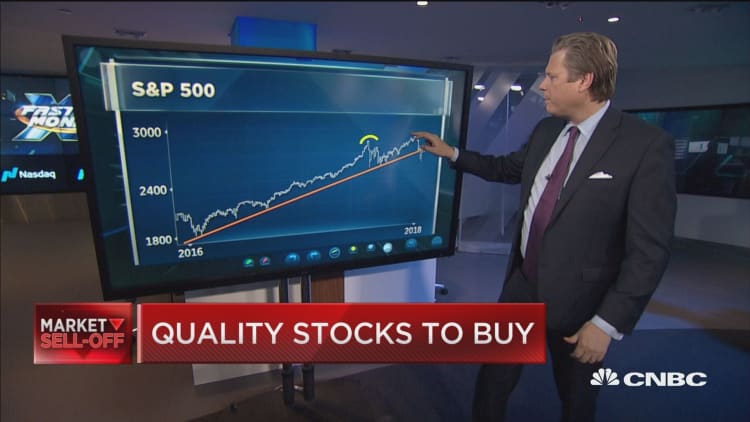Goldman Sachs's bear market prediction tool is at an "elevated" level that has historically signaled a zero average return over the next 12 months and a "substantial" risk of drawdown.
Goldman's bear market indicator — which takes into account the unemployment rate, manufacturing data, core inflation, the term structure of the yield curve and stock valuation based on the Shiller PE ratio — is at a rare 73 percent, its highest level since the late 1960s and early 1970s.
The indicator is "flashing red," wrote Goldman chief global equity strategist Peter Oppenheimer. "Historically, when the Indicator rises above 60 percent it is a good signal to investors to turn cautious, or at the very least recognize that a correction followed by a rally is more likely to be followed by a bear market than when these indicators are low."

The caution from one of Wall Street's banking bellwethers came as the Dow Jones Industrial Average and S&P 500 each added to steep losses over the past few weeks. The Dow finished Monday's session down 602 points — or 2.3 percent — while the broader S&P's slid 1.9 percent, bringing its three-month move to a loss of 3.7 percent.
"Coupled with tighter financial conditions, the impact of U.S. trade tariffs and rising oil prices have slowed global growth momentum," the Goldman stock strategist added. "We often see slightly higher volatility and a peak followed by a correction, and then another peak around the top of a bull market. We have seen corrections twice this year: in January and then again in October."
Though nearly every sector lost ground on Monday, the pain was worst in technology, consumer discretionary, energy and financials, which all dropped more than 1.9 percent. Amazon, thought by many to be at the intersection of technology and consumer discretionary stocks, closed in a bear market and is down more than 20 percent from recent highs.
The Nasdaq Composite finished the day in correction territory.
But while the Goldman indicator may be suggesting tougher times ahead, Oppenheimer said there many be reason not to jump to conclusions about an upcoming bear market.
"There remain good reasons why this indicator has been consistent with a sharp correction rather than the start of a prolonged bear market," he wrote. "We continue to expect a sustained period of low returns rather than a sustained bear market."
For his part, Oppenheimer expected economic growth to slow, but does not forecast a recession. In order for the stock strategist to ring the alarm about impending recession, he said he'd need to see a sharp rise in inflation and interest rates. But because of lethargic inflation, there has been a trend lower in volatility and longer expansion phases.
The Fed's preferred inflation gauge, the PCE price index excluding the volatile food and energy components, rose 0.2 percent in September after being flat in August.
That left the year-on-year increase in the so-called core PCE price index at 2.0 percent for a fifth straight month. The metric rose above the central bank's 2 percent inflation target in March for the first time since April 2012.
"Our view about the prospects for low returns is based on the idea that, without a recession, a bear market is not very likely," Oppenheimer concluded. "While the likelihood of negative returns rises as growth slows, it doesn't
become high until GDP growth is below 1 percent."


